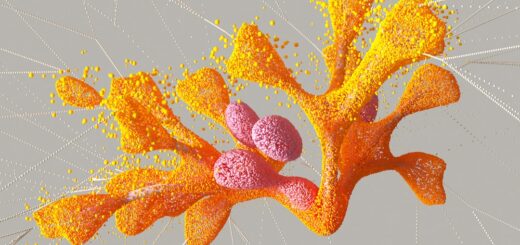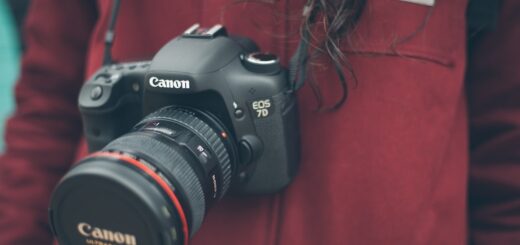Tips for Creating Beautiful Bokeh in Your Photos
Welcome to the world of photography where creativity knows no bounds! If you’re looking to add a touch of magic to your photos, mastering the art of creating beautiful bokeh is a must. Bokeh, a term derived from the Japanese word “boke” meaning “blur,” refers to the aesthetically pleasing background blur in an image. It is often used in portrait and macro photography to create a visually appealing and dreamy look.
In this article, we will dive into the wonderful world of bokeh and discuss some tips and tricks to help you create stunning bokeh in your photos. Whether you’re a beginner or an experienced photographer, these insights will help you take your skills to the next level.
So, grab your camera, prepare to unleash your creativity, and let’s explore the magic of bokeh together!
Image source: Unsplash.com
Understanding Bokeh
Welcome to the fascinating world of bokeh! If you’re a photography enthusiast, you’ve probably come across this term before. But what exactly is bokeh and why is it so captivating? Let’s dive in and explore the concept of bokeh in photography.
Definition of Bokeh
Bokeh refers to the aesthetic quality of the out-of-focus areas in an image. It is derived from the Japanese word “boke,” which means blur or haze. In simple terms, bokeh is the pleasing background blur that creates a visually appealing image.
Uses of Bokeh in Photography
Bokeh is particularly popular in portrait and macro photography. By creating a shallow depth of field and a beautiful blur in the background, bokeh helps draw attention to the main subject of the photograph. It adds a sense of depth and separation between the subject and its surroundings, resulting in stunning and impactful images.
Imagine capturing a portrait where the subject is razor-sharp and in focus, while the background is transformed into a dreamy, soft, and indistinct blur. This artistic technique not only adds visual interest but also elicits an emotional response from the viewer, creating a mood or atmosphere within the photograph.
Bokeh can also be used creatively in other genres of photography, such as still life or landscape photography, to evoke a sense of depth or highlight specific elements within the frame. It adds a touch of magic and allure to any photograph, elevating it from ordinary to extraordinary.
So, now that we have a basic understanding of bokeh and its uses, let’s explore the key factors that contribute to creating this beautiful effect in your photographs.
Key Factors in Creating Bokeh
Creating an attractive bokeh effect in your photos is all about understanding the key factors that contribute to its creation. In this section, I will discuss the three main elements you need to consider: the choice of lens, aperture settings, and the distance between your subject and the background.
Choice of Lens
The type of lens you choose can greatly impact the quality of bokeh in your photos. Some lenses are specifically designed to produce a pleasing bokeh effect, while others may not be as capable. Here are a few things to keep in mind when selecting a lens:
- Wide Aperture: A lens with a wide maximum aperture, such as f/2.8 or wider, is ideal for creating bokeh. This allows more light to enter the lens, resulting in a shallower depth of field and a more pronounced background blur.
- Prime Lenses: Prime lenses, which have a fixed focal length, are often preferred for capturing bokeh. They tend to have wider maximum apertures and produce a more pleasing background blur compared to zoom lenses.
- Lens Quality: The overall optical quality of your lens can also affect the bokeh. Higher-end lenses generally produce smoother and more visually appealing bokeh due to better lens construction and design.
Aperture Settings
The aperture setting you choose plays a crucial role in achieving the desired bokeh effect. Here are a few tips to consider:
- Wide Aperture: As mentioned earlier, using a wide aperture (small f-number) allows for a shallower depth of field, resulting in a more pronounced background blur and bokeh.
- Experiment with Different Apertures: While wide apertures are commonly used for bokeh, don’t be afraid to experiment with different aperture settings to achieve the desired effect. Sometimes, a slightly narrower aperture can still produce pleasing bokeh while keeping more of the subject in focus.
Distance Between Subject and Background
The distance between your subject and the background also plays a significant role in creating bokeh. Here’s what you need to know:
- Increase Subject-Background Distance: To achieve a stronger bokeh effect, try to maximize the distance between your subject and the background. The greater the distance, the more pronounced the background blur will be.
- Keep Distance Consistent: It’s important to maintain a consistent distance between your subject and the background. Any changes in distance can affect the intensity of the bokeh effect.
Remember, achieving beautiful bokeh is a combination of these factors. Experiment with different lenses, aperture settings, and subject-background distances to find the perfect balance that produces the desired bokeh effect in your photographs. Keep practicing and refining your techniques to capture stunning images with captivating bokeh.
Enhancing Bokeh Effect
If you’re looking to enhance the bokeh effect in your photos, there are a few techniques and settings you can try. By using points of light, shooting in low light conditions, and utilizing ambient or artificial light sources, you can take your bokeh game to the next level. Let’s dive into these methods in more detail.
Using Points of Light
One way to enhance the bokeh effect is by incorporating points of light into your composition. These can be streetlights, fairy lights, candles, or any other small light sources. When these points of light are out of focus in the background, they will transform into beautiful, glowing orbs, adding a magical touch to your photo.
Shooting in Low Light Conditions
Bokeh tends to be more pronounced in low light conditions. When there is less light available, your camera’s aperture needs to open wider to let in more light, resulting in a shallower depth of field. This shallow depth of field creates a greater separation between the subject and the background, making the bokeh effect more prominent.
Using Ambient or Artificial Light Sources
Another way to enhance bokeh is by using ambient or artificial light sources strategically. For example, if you’re shooting outdoors during golden hour, the warm, soft light from the setting sun can add a beautiful glow to your bokeh. Similarly, using external lights like LED panels or fairy lights can add interesting patterns and shapes to the bokeh.
Remember that bokeh is not only limited to the background. You can also create foreground bokeh by placing objects with interesting textures or shapes in front of your lens. This can add depth and dimension to your photos, making the bokeh effect even more captivating.
Pro Tip: Experiment with different focal lengths and distances from the subject to achieve different bokeh effects. Wide-angle lenses can create softer, more diffused bokeh, while telephoto lenses can produce more distinct and crisp bokeh.
By incorporating these techniques into your photography, you can enhance the bokeh effect and add a touch of artistry to your images. Don’t be afraid to experiment and get creative with different light sources and compositions. Happy shooting!
“Bokeh can transform a mundane scene into a dreamy and ethereal masterpiece.”
Lenses and Bokeh Quality
When it comes to creating beautiful bokeh in your photos, the choice of lens plays a significant role in the overall quality of the bokeh effect. While all lenses can produce some level of background blur, certain lenses are known for their ability to create more pleasing and aesthetically appealing bokeh. Here are a few factors to consider when selecting a lens for capturing bokeh:
- Aperture Shape: The shape of the lens aperture blades can affect the quality of the bokeh. Lenses with circular aperture blades tend to produce smoother and more natural-looking bokeh compared to lenses with non-circular or hexagonal aperture blades. The circular shape helps create a more pleasing and soft background blur.
- Lens Design: The design of the lens can also impact the quality of the bokeh. Some lenses are specifically designed to optimize the bokeh effect, resulting in smoother and more pleasing background blur. These lenses often have a wider maximum aperture, allowing for better depth of field control and background separation.
- Lens Focal Length: The focal length of the lens can influence the bokeh effect. Generally, lenses with longer focal lengths, such as telephoto lenses, tend to produce a more pronounced and creamy bokeh. This is because longer focal lengths compress the background, resulting in a more blurred and out-of-focus background.
- Lens Optics: The quality of the lens optics can also impact the bokeh effect. Lenses with high-quality optics tend to produce more pleasing bokeh with minimal distortion or aberrations. Cheaper lenses or lenses with lower quality optics may produce bokeh that appears harsh or less smooth.
It’s important to note that while certain lenses may be known for producing great bokeh, the quality of the bokeh can also be subjective and dependent on individual preferences. What one photographer may find pleasing, another may not. Experimenting with different lenses and their settings can help you discover the type of bokeh that suits your artistic vision.
Remember, bokeh is just one aspect of photography, and while it can add a beautiful touch to your images, it’s important to also consider other factors such as composition, lighting, and storytelling in your photographs.
So, when choosing a lens for capturing bokeh, keep in mind the aperture shape, lens design, focal length, and lens optics. However, don’t forget to let your creativity shine and experiment with different techniques to achieve your desired bokeh effect. Happy shooting!
Experimenting with Bokeh
Bokeh photography is not only visually appealing but also provides an opportunity for photographers to add a touch of creativity and uniqueness to their images. If you’re looking to experiment with bokeh and create stunning photos, here are a few tips to get you started:
- Play with Different Aperture Settings: The aperture setting on your camera controls how much light enters the lens. A larger aperture (smaller f-number) such as f/2.8 or wider will create a shallower depth of field, resulting in a more pronounced bokeh effect. Experiment with different aperture settings to find the perfect balance between your subject and the background blur.
- Experiment with different lenses: Not all lenses are created equal when it comes to capturing bokeh. Some lenses have a wider maximum aperture, which allows for more light to enter, resulting in a smoother bokeh. Prime lenses, like a 50mm f/1.8, are often recommended for bokeh photography due to their wide aperture capabilities. However, don’t be afraid to try out different lenses and see how they affect your bokeh results.
- Get Close to Your Subject: The distance between your subject and the background plays a significant role in achieving a pleasing bokeh effect. The closer you are to your subject, and the farther the subject is from the background, the more prominent the bokeh effect will be. So, if you’re shooting portraits, position your subject away from the background to create a dreamy bokeh background.
- Use Points of Light: To enhance the bokeh effect, incorporate points of light into your composition. Streetlights, fairy lights, or even candles can create beautiful bokeh orbs in your photos. Position these points of light behind your subject and watch as the bokeh transforms your image into a magical scene.
- Experiment with Low Light Conditions: Shooting in low light conditions can also help enhance the bokeh effect. When the available light is limited, the bokeh orbs become more pronounced against the dark background, creating a stunning contrast. Consider shooting during golden hour or twilight for the best results.
- Utilize Ambient or Artificial Light Sources: Another way to enhance bokeh is by utilizing ambient or artificial light sources. For example, shooting with a warm backlight can create a beautiful halo effect around your subject, adding depth and magic to your bokeh. Don’t be afraid to get creative and experiment with different light sources to achieve unique and captivating bokeh effects.
Remember, bokeh photography is all about experimentation and personal style. Don’t be afraid to try different techniques, settings, and compositions to find your own unique bokeh signature. So grab your camera, go out there, and have fun exploring the world of bokeh photography!
Conclusion
In conclusion, bokeh is a powerful technique in photography that adds depth and visual interest to your photos. By understanding the definition of bokeh and its uses in photography, as well as the key factors in creating bokeh, you can elevate your images to the next level.
Remember, the choice of lens, aperture settings, and the distance between your subject and background all play a significant role in achieving beautiful bokeh. Experiment with different techniques and settings to find the perfect balance for your desired effect.
Additionally, enhancing the bokeh effect can be achieved by using points of light, shooting in low light conditions, and utilizing ambient or artificial light sources. These techniques can give your bokeh a mesmerizing quality and make your photos truly stand out.
Lastly, keep in mind that the quality of bokeh can vary depending on the lens design. Some lenses produce more pleasing bokeh than others, so it’s worth experimenting with different lenses to find the one that suits your style and preferences.
To learn more about photography, camera reviews, and get inspiration for your projects, visit Wimarys.com. Wim Arys Photography offers a wealth of tutorials, tips, and tricks to help you improve your photography skills and create stunning images.
Frequently Asked Questions
- What is bokeh in photography?
Bokeh refers to the aesthetic quality of the out-of-focus areas in a photograph. It is achieved through the manipulation of depth of field and results in a soft, smooth, and pleasing background blur.
- How can I create bokeh in my photos?
To create bokeh in your photos, use a lens with a wide aperture (low f-number), select a subject that stands out from the background, ensure good distance between the subject and background, and make use of attractive background elements like lights or bokeh balls.
- What type of lens is best for getting a bokeh effect?
Prime lenses with a wide maximum aperture, such as f/1.8 or f/1.4, are ideal for achieving a strong bokeh effect. These lenses allow for a shallower depth of field, resulting in a more pronounced background blur.
- Can I create bokeh with a smartphone camera?
While it is more challenging to create bokeh with a smartphone camera due to their fixed aperture, some newer smartphones have portrait modes or depth-of-field effects that mimic bokeh. Additionally, external lens attachments can be used to enhance bokeh on smartphones.
- Are there any post-processing techniques to enhance bokeh?
Yes, you can enhance bokeh during post-processing by using software like Adobe Photoshop or Lightroom. You can apply lens blur or selective blur effects, adjust contrast and saturation, and make targeted adjustments to the background to make the bokeh more pronounced and appealing.




